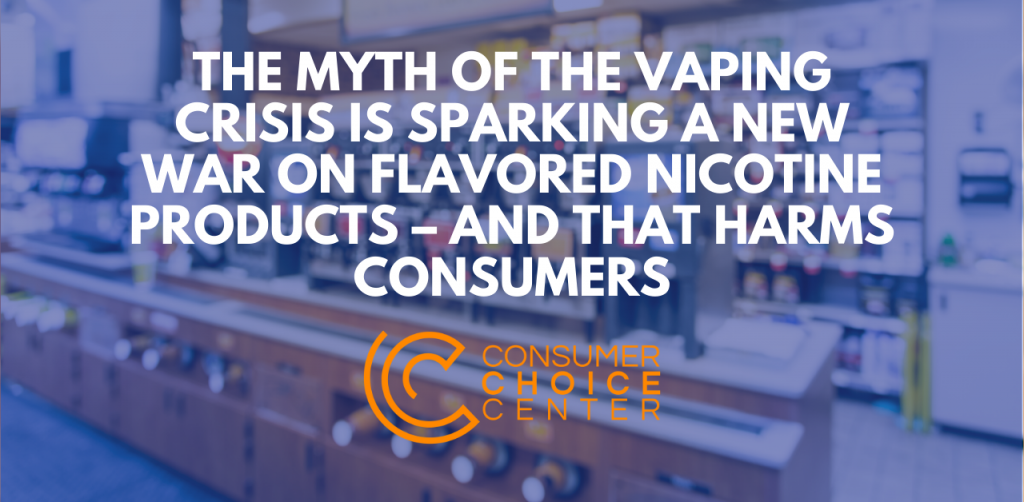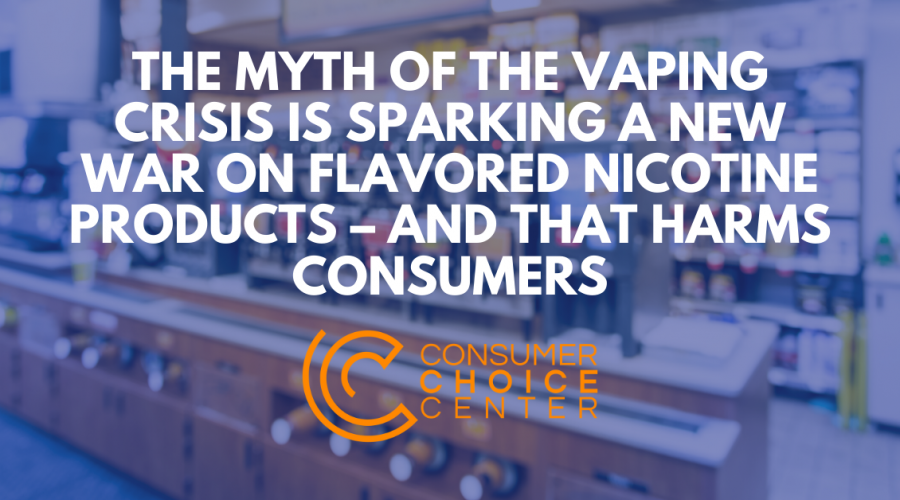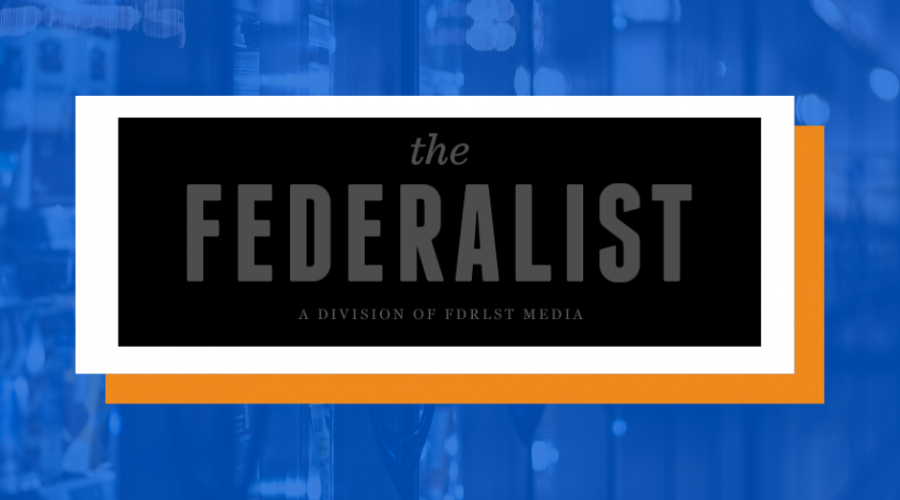The Myth of the Vaping Crisis is Sparking a New War on Flavored Nicotine Products – And That Harms Consumers

In the backdrop of a very busy Congress, members of the U.S. House are pushing a bill that would eradicate entire categories of flavored nicotine products.
This sweeping ban would directly harm consumers who use menthol tobacco, flavored cigars, snus, and vaping products by outlawing the products they use and pushing them to the black market.
The proposed law comes in the wake of the much-hyped “vaping crisis” that transpired over the summer, in which thousands of individuals suffered lung damage from inhaling vapor products, also called e-cigarette, or vaping, product use-associated lung injury (EVALI).
In the end, the culprit was revealed to be illegal cannabis vaping cartridges loaded with Vitamin E acetate and not nicotine vaping products, according to the Centers for Disease Control.
Though scientific experts correctly identified the cause of the injuries – black market THC cannabis vape cartridges – that hasn’t stopped legislators from using that pretext to introduce new prohibitions on flavored tobacco products used responsibly by adult consumers.
H.R. 2339, named the Reversing the Youth Tobacco Epidemic Act of 2019, proposes several sweeping changes to flavored consumer products and is expected to soon hit the House floor for a vote.
The bill would outlaw the following:
- Menthol products
- Flavored cigars and cigarillos
- Flavored smokeless tobacco, known as snus or dip.
- Some flavored vaping products
The goal is to significantly reduce or eliminate youth use of these products, which is a noble pursuit.
But youth smoking is at an all-time low
Fewer young people than ever are using traditional tobacco products – less than 2.3%. That’s a significant decline since the year 2000, where nearly 15% of minors smoked cigarettes, according to the CDC.
- This represents a public health victory, and one that has been achieved with sensible education, regulation, and innovation. The same is true for adult smokers. Just 13.7% of adults currently smoke, the lowest number ever recorded.
- The latest CDC figures show that 20.8 percent of high schoolers have vaped at least once in the last 30 days. But 7 to 8% of those were vaping cannabis rather than nicotine.
- A total flavor ban on all tobacco products and vaping products for adults would do little to curb use among youth.
- It may even exacerbate the problem and only punish lawful adult consumers and deprive them of their choice, not to mention devastate the communities that rely on tobacco taxes to fund important social programs.
What’s more, by categorizing non-tobacco vapor products as tobacco products, House members are attacking the very innovation that has led to the lowest-ever figure of recorded tobacco use.
Prohibition Hasn’t Worked
The 100-year anniversary of the passage of Prohibition of alcohol took place last month.
- All these years later, we know that outlawing certain consumer products does not eradicate their existence. Rather, it moves them from the legal, regulated market to the illicit and unregulated black market.
- This makes the products themselves less safe, and the trade around those products even more dangerous.
After an entire nation had awoken to the disaster of Prohibition, it was successfully repealed in 1933.
Minorities are more likely to use menthol products
According to the CDC, African-Americans who use tobacco are 90% more likely to favor menthol products and represent the vast majority of consumers in the flavored tobacco market.
- A ban would create an illicit market without regulations or ID checks
- Such bans would then force police officers to crack down on illicit menthol cigarette trade, further straining relations between the African-American community
- As seen in the case of Eric Garner, who was choked out by a police officer and later died in New York City for selling loose cigarettes on the street, bans and restrictions that create illegal markets can lead to devastating consequences.
- If a law bans menthol and flavored tobacco products, the demand wouldn’t disappear.
Rather, it would be pushed into the unregulated market, siphoning away tobacco taxes and incenting police officers to use their power to enforce laws in minority communities.
Age-restriction by law is a powerful means of dissuading youth use
By penalizing convenience retailers that sell to minors, regulators have already created a significant barrier to youth access.
- This allows law enforcement to prosecute bad actors and focus their efforts on illicit markets where dealers don’t ask for ID.
- Recently, Congress’ raising of the age to purchase tobacco and vaping products to 21 years old also dissuades youth use, ensuring no high schooler will be able to legally purchase these products.
- Nearly half of tobacco and vape shops don’t ID young customers.
Enforcing existing laws on youth access, including prosecuting shops that don’t check ID, are a powerful means of keeping youth away from tobacco products.
Bans Deny the Science on Harm Reduction by Vaping and Smokeless Products
For many adult smokers looking to quit, vaping products have been proven key to harm reduction.
- About 4.4% of adults, nearly 11 million, are now using vaping devices
- National health bodies around the world, including Public Health England, the New Zealand Ministry of Health, and Health Canada have endorsed vaping as a smoking cessation method.
- The U.K.’s top health body has repeatedly said that vaping and e-cigarettes are 95 percent less harmful than smoking.
- Bans that include flavored vaping products would deprive adult smokers of a less harmful method of consuming nicotine
We all have an interest in eliminating the number of young people who take up smoking. But counterintuitive bans would make that goal harder, not easier to achieve.
And depriving adult consumers of harm reducing technologies like flavored vaping products will reserve the decades of public health successes.
Let’s hope our members of Congress consider these facts before they vote on H.R. 2339.











